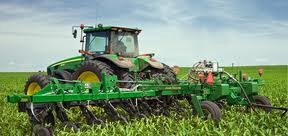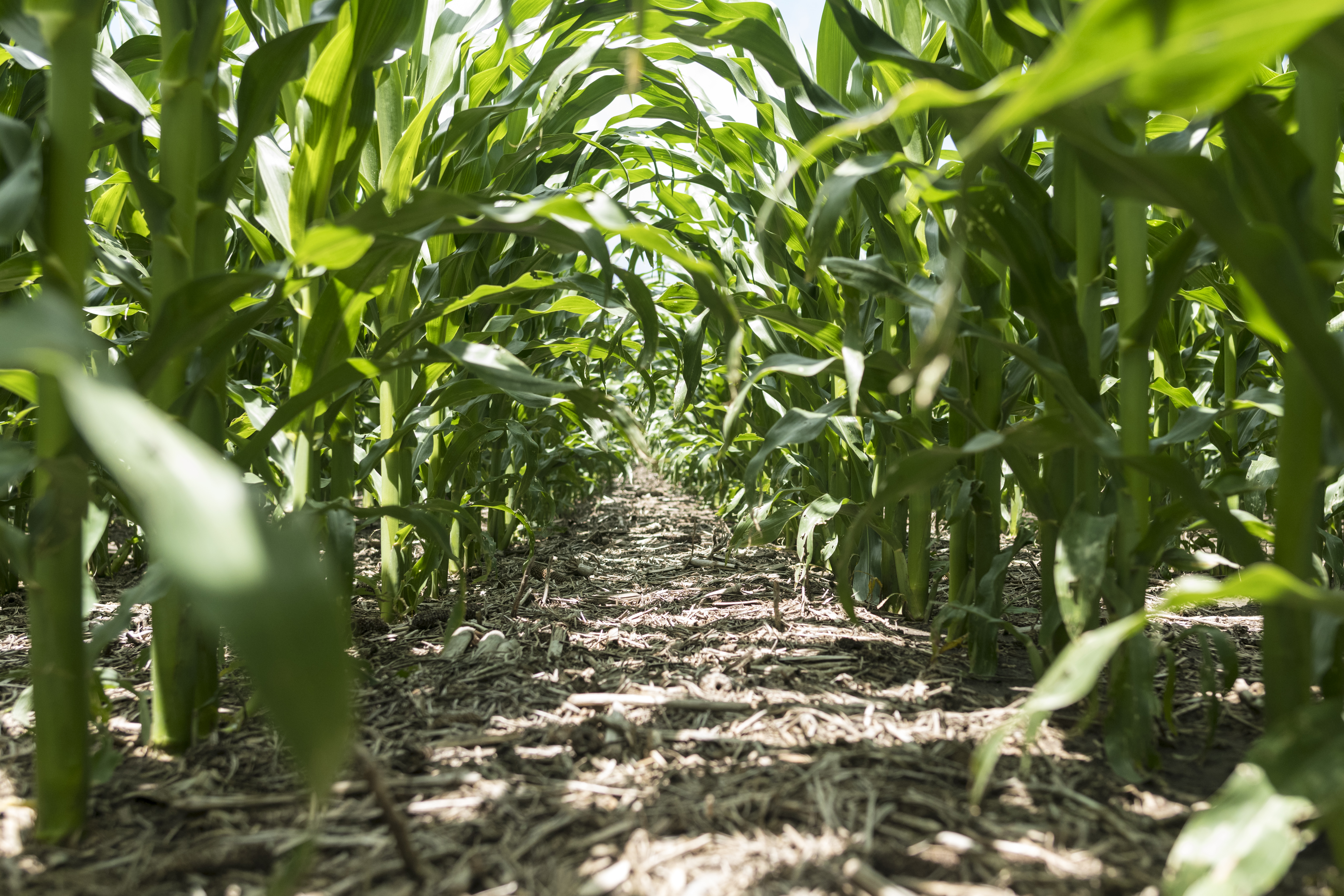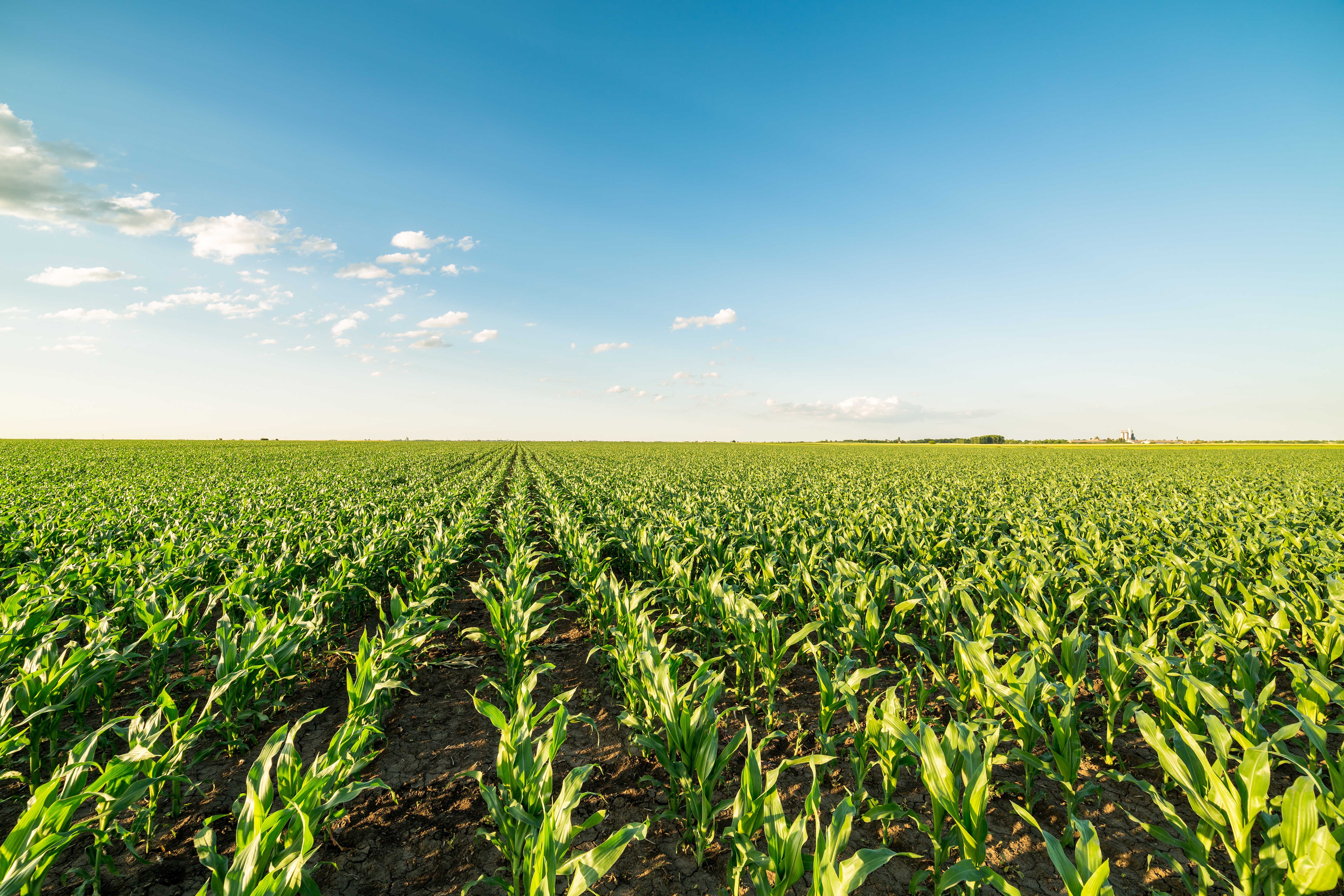Soil sample testing for Nitrogen is very important. When you soil test, you receive an analysis report in which nitrates are reported as part per million and pounds per acre. The ppm is the concentration of the sample received and the pounds per acre is a calculated from the ppm and the depth of sample. Nitrate is just one of the chemical compounds of nitrogen found in the soil, and conversion from one form to another occurs rather easily throughout the year. Soil testing is a good tool at providing an estimate of nitrogen availability, but soil samples taken at different times of the year can give different nitrate results, especially as the soil warms up in the spring and more nitrogen converts from ammonium to nitrate.
A common method to determine nitrogen fertilizer needs is to use the nitrate result from our soil test in an equation to calculate your nitrogen requirement for corn. Most equations will require an expected yield goal, a nitrogen factor, and then subtraction of nitrogen credits, which would include your soil test nitrate nitrogen. An example of this would be as follows:
N Requirement = (Yield Goal x 1.2nfactor) – Nitrate – Legume Credit – Manure Credit
This is a basic equation. University extension programs and soil labs may have an equation that is more complex. This equation is a useful starting point in the process of determining how much N you will need for a corn crop. There are some potential pitfalls to this equation. If I take soil samples in the fall after harvest, my nitrate levels are substantially less than when I sample the same field in the spring just before planting. My fall sample may report 20 pounds of nitrate per acre while the spring soil sample could have 70 pounds per acre. If I only use this equation, I would need to apply 50 additional pounds of fertilizer according to the calculation if using my fall soil sample result. However, I do not know if I am over applying nitrogen using the fall result or if I am under applying using the spring result. What some agronomists do is adjust the N factor to accommodate for the time of year in which the sample is taken. They may also make adjustments for different products and split application in which nitrogen utilization should be more efficient.
Spring soil samples are probably better when using an equation to calculate nitrogen needs, but fall soil sampling will provide good insights about the previous season. With a fall sample, I refer back to the expected yield and the nitrogen applied the previous season and make fine tune adjustments. In my opinion, a nitrate result between 20 and 50 lbs. per acre is acceptable. If I met or exceeded yield expectations and soil test results are in this range, I recommend applying about the same amount of nitrogen as the year prior. If yields were better than expected and soil test results exceed 50 lbs. per acre, I may consider backing off the rate of nitrogen applied the next season. If soil test nitrates comes back low, re-evaluate your nitrogen needs and consider increasing the nitrogen application the next season. Big swings in nitrogen applications is not recommended, rather small tweaks year to year are ideal.
Nitrogen calculations are linear. As the yield goal increases, so does the recommended amount of nitrogen. Reality is that nitrogen needs are not a straight line. Equations cannot calculate the impacts that weather and availability of other plant nutrients may have on yield. Over the course of 5 years, a swing of greater than 100 bushels/acre in yield could occur using the same rate of nitrogen each year, all because of the impacts of weather. I view the corn plant as a factory. It will take a set amount of bricks, mortar, and raw material (nitrogen) to build the factory and start producing a product. Once the factory is built, it only takes a little more raw material to increase production. Weather is like a workers union, and if the weather cooperates, production continues to increase, but if the weather goes on strike, all the raw materials are wasted because the factory has to shut down. Since weather can be so impactful on nitrogen availability, it works well to have a back-up plan in place to apply additional nitrogen in season with a side dress application or through pivot fertigation.
The corn plants will take up most of its nitrogen between the V8 and VT growth stages. We want to limit nitrogen deficiency at this time to limit potential yield reductions. This is where a Pre Side dress Nitrogen Test (PSNT) soil sample is a good idea. A PSNT sample is taken 7 to 10 days before a side dress application of nitrogen. This method works well if you are considering a side dress application to supplement for previous nitrogen loss or looking to adjust a planned side dress application. University recommendations may differ between states, but most would agree that 25 ppm nitrate in a 12” sample, or approximately 90 lbs. of nitrate per acre is the critical level for corn. If your test result is higher than 25 ppm, no additional nitrogen is recommended. If the ppm nitrate is lower than 25, additional nitrogen fertilizer is recommended, and some universities will provide equations to calculate your needs, others will have a recommended base rate. You probably are wondering why 90 lbs. of nitrate nitrogen would be acceptable, especially when you applied much higher rates of fertilizer. Remember there is constant conversion of nitrogen in different forms and will continue to convert to nitrate throughout the season. The corn plants will have already extracted nitrogen from the soil and accumulated it in the leaves by the time you take a PSNT sample. This is why an accompanying tissue test may also be of value when taking a PSNT soil sample.
With the Spot On Scripts platform, we manage nitrogen using a variety of tools. The start is with a soil test, and a 24” or 36” sample is always recommended. Then we create recommendations for our customers and use a crop model to gauge the impact weather is having on our nitrogen availability to the growing crop. When potential problems are detected, additional investigation is required. We use the PSNT test and collect tissue samples before any additional fertilizer is applied. Our goal is to optimize yields with the least amount of input dollars and avoiding excess fertilization.



